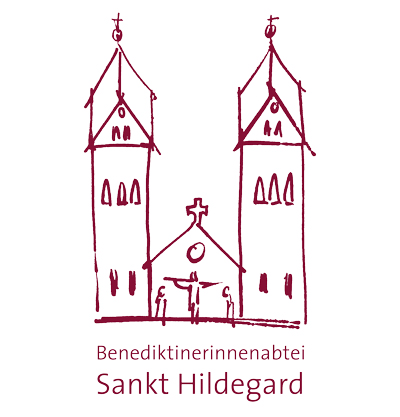The interior of the church is characterized by the monumental figure of Christ above the altar in the apse. Painted on gold ground it reminds the viewer of a Byzantine mosaic – an association, which was definitely intended by the artist. Christ appears as Pantocrator, as sublime king and ruler of the universe, but at the same time man’s brother who receives him with open arms. The outstretched arms suggest the deep symbolism of this figure of Christ: The one who is invited comes out of his own free will and not by force. The relationship between Christ and man is a relationship of friendship and love. All are invited at any time and any place regardless of where they may be. In such a way, this figure of Christ is looking at each viewer; there is no place where he could withdraw to, to evade this gaze. This effect is due to the curve of the dome-shaped apse, which the artist at the Abbey of St Hildegard took full advantage of.
Below this image of Christ there is a frieze with thirteen lambs, a motif, which was already used in many churches in early Christian times. The thirteen lambs are a symbol for Christ and the twelve apostles. As a rule, this representation of Christ is considered a reference to the Eucharist, a celebration of Christ’s sacrifice. But here, the lambs cannot have this meaning as the picture is also a symbol for the apostles. Therefore a connection to Lk 10:3 suggests itself, where it says: „I send you out as lambs in the midst of wolves“. The apostles and consequently all Christians are not to bring the Good News and to build the Kingdom of Heaven with human power and strength, on the contrary: „…but God chose what is foolish in the world to shame the wise, God chose what is weak in the world to shame the strong“ (1 Cor 1:27). The standards of divine love do not correspond to that which the world considers to be of rank and importance, but God works particularly in the inconspicuous and the weak: This is the message, which the thirteen lambs try to impress on the viewer.
Below the frieze of lambs is a second frieze showing eight complete figures of angels, who are aligned in a strictly forward position and are clothed in white girded tunics (ancient Roman dress, on which the habit of the Benedictine order was based). Above their wings one can see the letters „SCTS“ – sanctus (holy), as a sign for the perpetual praise of God.
